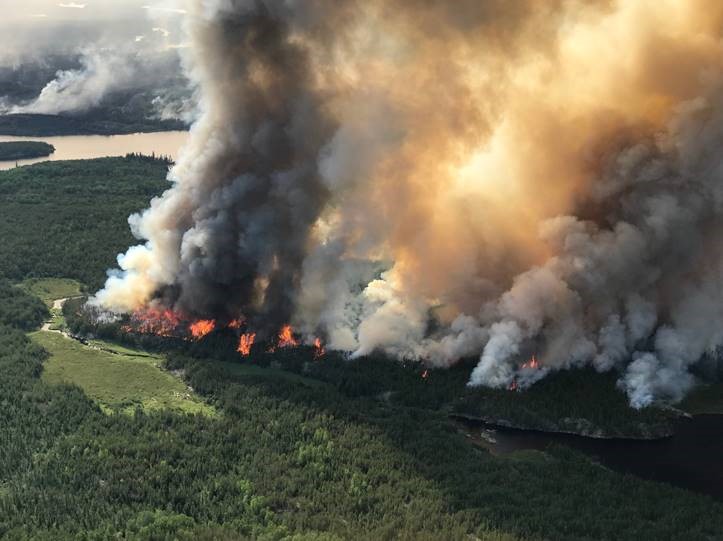More than 3,000 people have been evacuated from five First Nations in northern Ontario due to ongoing wildfires that are spreading throughout the region, provincial officials confirmed Monday morning.

There have been complete evacuations of Poplar Hill and Deer Lake First Nations, while vulnerable residents have been moved out of Pikangikum, North Spirit Lake and Cat Lake.
“All requests for evacuations have been facilitated by the province,” Ontario solicitor general Sylvia Jones and Minister Greg Rickford said in a joint statement.
“Over 600 wildland firefighters continue their efforts to contain and suppress the fires in the northwest, utilizing all available land and aerial equipment to protect people and property.”
A number of First Nations and municipalities have declared emergencies in response to the rapidly evolving situation. According to government officials, five First Nations and one municipality have declared emergencies due to fire and smoke threat, while two First Nations and five municipalities declared emergencies to host evacuees.
Currently, there are 151 wildland fires burning in Ontario, 138 of which are in the northwest region and 13 of which are in the northeast region.
Officials said some fires of note include one dubbed SLK 060, which is about eight kilometres west of Cat Lake First Nation and isn’t currently under control, and another dubbed RED 065, which is about 6.13 kilometres west of Poplar Hill First Nation and also isn’t under control.
To combat the wildfires, the Ontario government is providing ground and aerial suppression supports, like firefighters, suppression equipment, helicopters and CL415 waterbombers.
Currently, 16 communities are hosting evacuees from northern Ontario First Nations. This includes: Cochrane, Sudbury, Kenora, Kapuskasing, NAV Centre (Cornwall), Thunder Bay, Timmins, Sioux Lookout, Peel Region, Sault Ste. Marie, Hearst, Pickle Lake, Lac Seul First Nation, Dryden, King Township and Six Nations.
Officials said Ontario is coordinating transportation, recreational activities, catering, health and social services, while the federal government is engaged with the province to provide supports for facilities, which could include emptying quarantine hotels and military bases.
- Invasive strep: ‘Don’t wait’ to seek care, N.S. woman warns on long road to recovery
- Ontario First Nation declares state of emergency amid skyrocketing benzene levels
- Do Canadians have an appetite for electric vehicles? Experts are divided
- Nearly 200 fossil fuel, chemical lobbyists to join plastic treaty talks in Ottawa
Moving forward, officials said the province will continue to communicate with First Nations leadership on the supports needed for evacuees and to make sure resources and evacuation capacity are available. The government also said it will continue to monitor the situation to see if an emergency declaration is needed in the future.
This year, there have been 902 wildfires so far. The 10-year average is 520.
More than 520,000 hectares have been burned this year. The average is around 153,000.
The government says the high numbers are a result of extreme drought conditions across most of northern Ontario.
Officials speaking on background said it’s difficult to attribute any specific fire season to climate change since each year varies widely but that climate change is expected to increase the number and risks of fires.
— With files from The Canadian Press






Comments